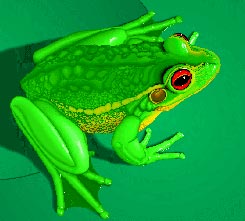Among the winners are frog scents, penguin speed calculators and more

Distinguished scientists came to Boston to celebrate the Nonsense Awards. Unlike other days at Harvard University, the first Thursday of October is when levity trumps gravity, irreverence trumps logic, and paper airplanes are encouraged. It's time for the 15th Ig-Nobel Awards ceremony held in front of a packed audience at Harvard's Sanders Theater.
Ten prizes were awarded this year to many winners. Some of the winners came to the event from Australia, Japan and New Zealand to take home the "Ig" award dedicated to science that "first makes you laugh and then also makes you think."
Four Nobel Prize winners, including Robert Wilson, winner of the Nobel Prize in Physics in 1978 and co-discoverer of the cosmic microwave background radiation, honored the event with his presence, and to show that respected scientists also like to sing nonsense songs. Wilson also served as the prize in the "Meet the Nobel Laureate" contest.
And the winners are…
The prize in biology was awarded to an international group of odorators and catalogers of the scent secretion of 131 species of frogs. The work that won the chemistry prize was by two lecturers from the University of Minnesota in Minneapolis who showed that a person can swim as fast in syrup as in water.
European researchers have secured the fluid dynamics prize by estimating the pressure required for successful defecation by penguins. Greg Miller of Oak Grove, Missouri, won a medicine award for the invention of Neuticles - an artificial replacement for dog testicles that comes in three sizes, and three degrees of firmness.
Claire Rind and Peter Simmons from the University of Newcastle in England, for a study in which they connected a grasshopper's brain to electrodes, which measured his brain movements, while watching "Star Wars". John Mainstone (Mainstone) from the University of Queensland in Australia won the Ig-Nobel Prize in Physics for the tar droplet experiment. This experiment, which began in 1927 by the co-winner of the award, showed that the tar, which appears solid, can behave like a liquid, forming droplets at a rate of one every nine years.
Mainston, a big believer in the Ig event, and it's not just because of the prize he picked up this year. Science has become a rat race largely thanks to the pressure to compete for research grant money, the retired physicist argues, and it's important to take a break from it every now and then. "When we stop seeing the entertaining side of science, everything passes."
A special tribute was dedicated at the ceremony to Harvard physicist Roy Glover, winner of the Nobel Prize in Physics this year. Before he went out to collect the prestigious award, Glover was known at Harvard for his service as the "official waste sweeper" that is, the person who collected the paper airplanes thrown by the audience in ten Ig-Nobel competitions.
For the news on the Nature news site
